Small Circle Flower Garden Ideas: Creating Cozy Blossoming Spaces
Creating a small circular flower garden can transform any part of your yard into a stunning visual display. Whether you’re working with a limited space or simply love the charm of circular designs, these gardens offer a unique and attractive way to brighten up your outdoor living area. They are perfect for adding a splash of color and life to small corners or unused spaces.
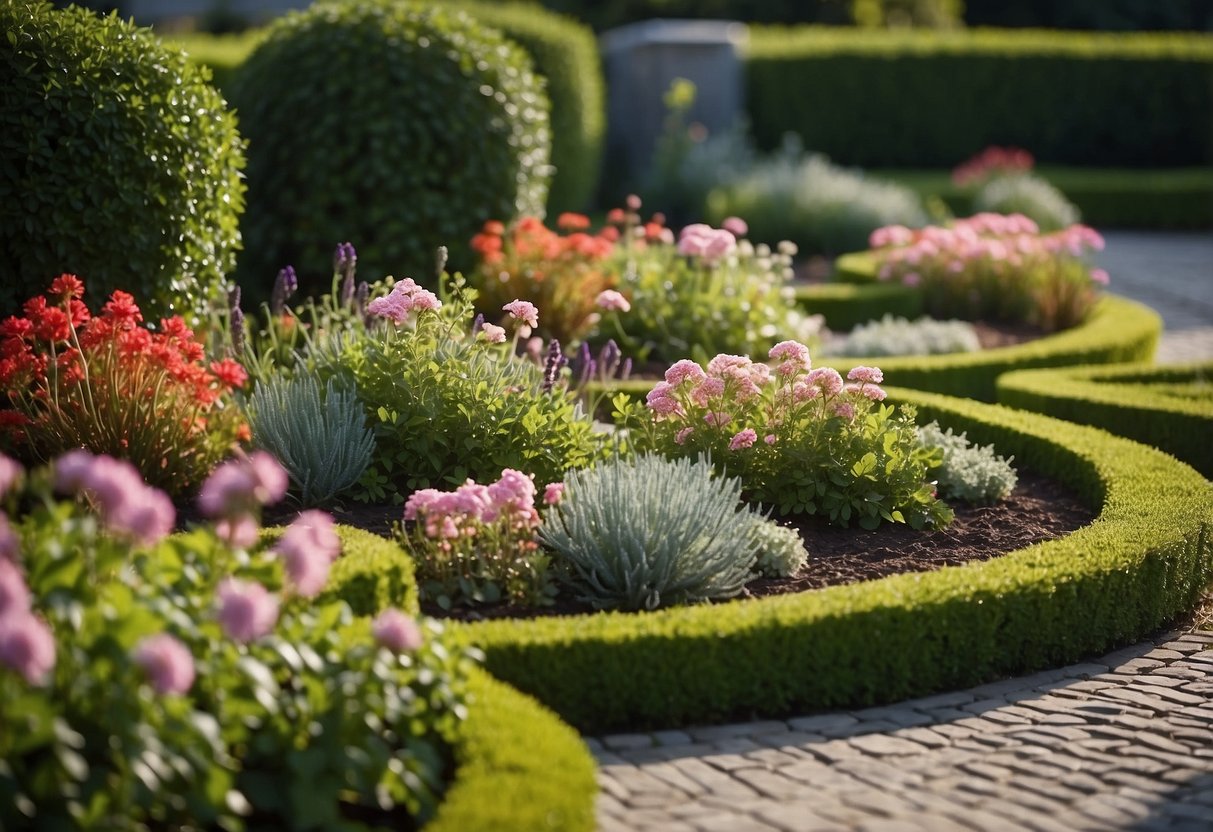
What can you do to make your small circle flower garden truly stand out? Designing around a focal point is key to achieving maximum visual impact. With thoughtful planning and a bit of creativity, you can create a circular flower bed that not only fits your space but also becomes a beautiful highlight in your garden.
1) Fairy Ring Garden

A Fairy Ring Garden can add a touch of magic to your yard. Use ferns, moss, and creeping thyme for dewy ground cover, especially in shady corners.
Include vining plants like morning glory to fill trellises. Add color with blooming plants and greenery.
Don’t forget fairy-sized accessories like tiny furniture or whimsical figurines for an enchanting atmosphere.
Create a focal point with a fairy house, and hide little treasures such as painted pebbles or tiny doors among the plants to invite curiosity. For more ideas, visit Fairy Garden Tricks.
2) Miniature Rose Garden
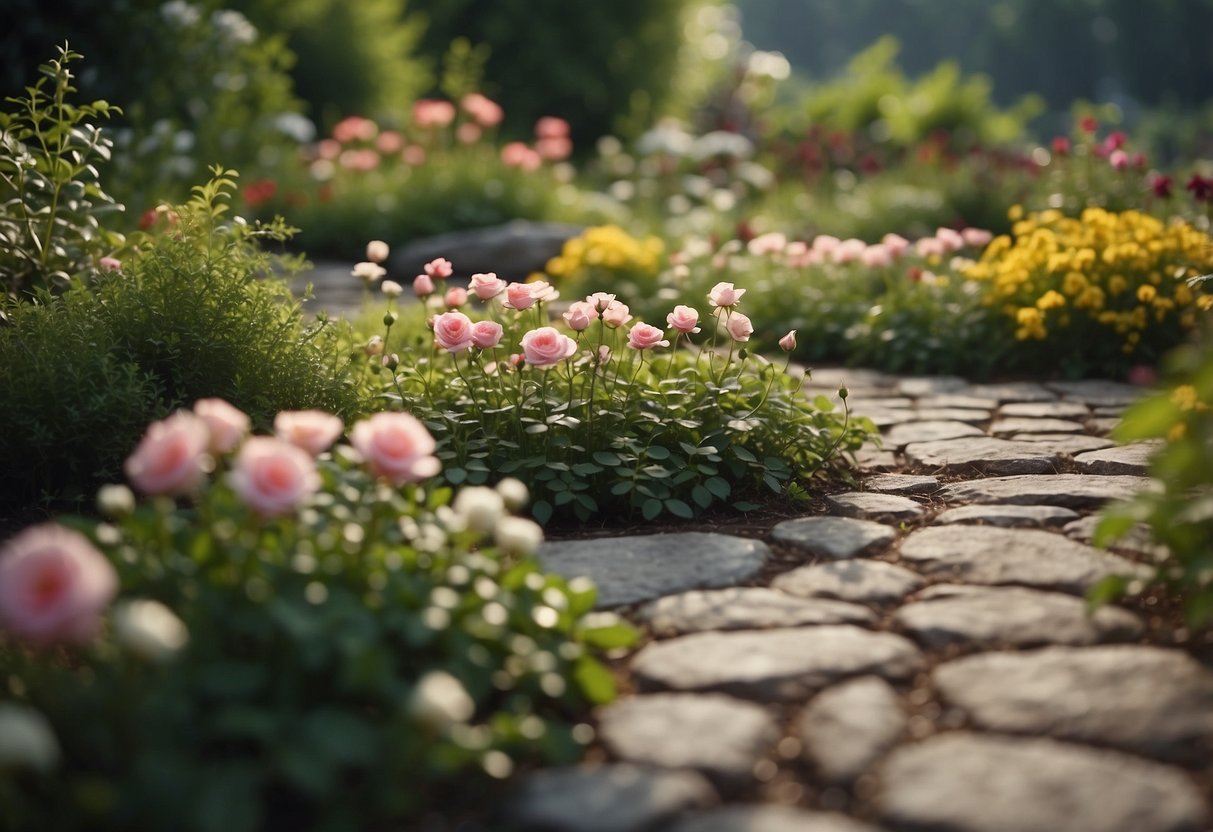
Miniature roses are perfect for small spaces. These tiny blooms come in many colors and bloom all season long. They can fit in small circles and pots.
Choose hardy varieties like Rosa Bianca or Liberty Bell Miniature Roses. These can handle different weather conditions well.
For a compact garden, pick varieties such as Gourmet Popcorn. This rose produces white buds with yellow centers. Your garden will look stunning!
3) Daisy Circle Garden

A Daisy Circle Garden is a lovely way to add cheer and brightness to your yard. These flowers thrive in a circular arrangement, and their bright blooms create a stunning visual impact.
Start by planting Gerbera daisies in the center. Around them, add Shasta daisies for a layered look. Mixing these varieties adds depth and interest to your garden.
With proper care, your daisy circle garden will bloom beautifully, making it a delightful spot in your yard. Consider adding a small bench nearby to enjoy the view.
Learn more about designing with daisies here.
4) Lavender Loop

Creating a Lavender Loop can add a great touch to your garden. Lavender not only smells wonderful, but it’s also a beautiful plant with its purple blooms.
To make a Lavender Loop, plant lavender in a circular pattern. This can be around a tree or a central garden feature.
It’s best to space the plants about 15 inches apart. The soil should have a pH of 6.5-7.5. This setup ensures the lavender thrives and forms a beautiful border. For more ideas, you can check out these small lavender garden ideas.
5) Petunia Roundabout
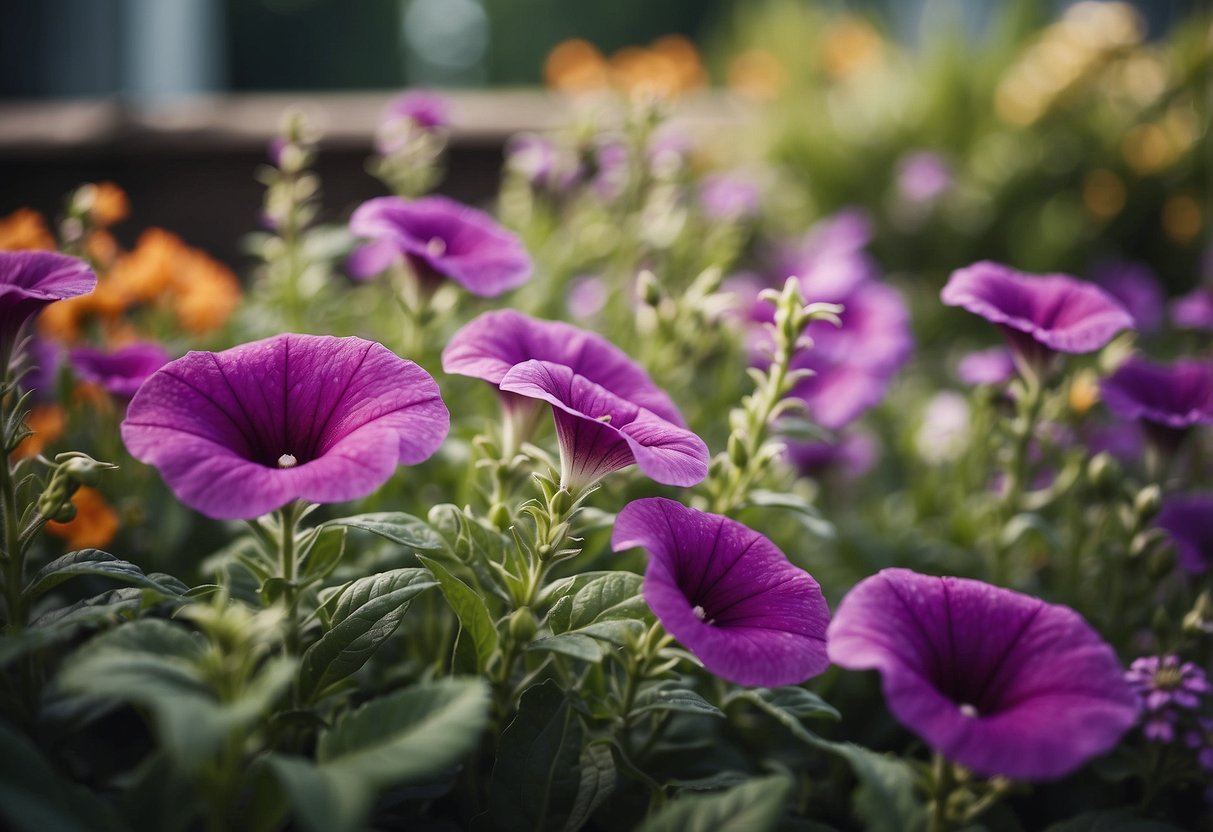
Create a beautiful focal point in your garden with a Petunia Roundabout. Fill a circular bed with a mix of vibrant petunias.
Use different colors to add variety and visual interest.
Arrange the plants in a symmetrical pattern for a balanced look.
For more ideas, visit 10 Stunning Petunia Landscaping Ideas and Landscaping With Petunias – 13 Eye-Catching Ideas.
6) Succulent Sunburst
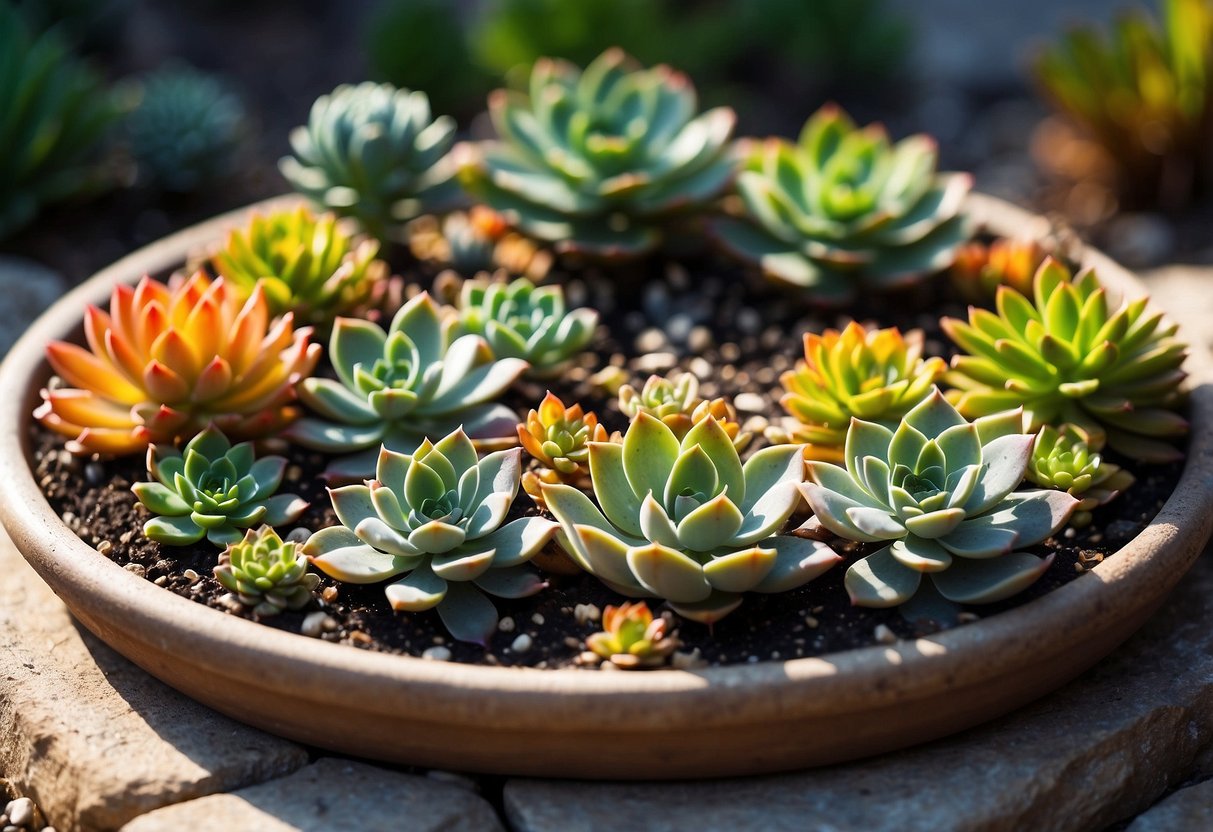
A Succulent Sunburst is a vibrant way to add color to your small circle flower garden.
Choose various succulents with bright hues. Arrange them in a radiant, circular pattern.
Place taller succulents in the center. Use shorter ones around the edge. This mimics sun rays and creates a stunning visual effect.
You can even add a pebble border for extra charm.
7) Tulip Whirl
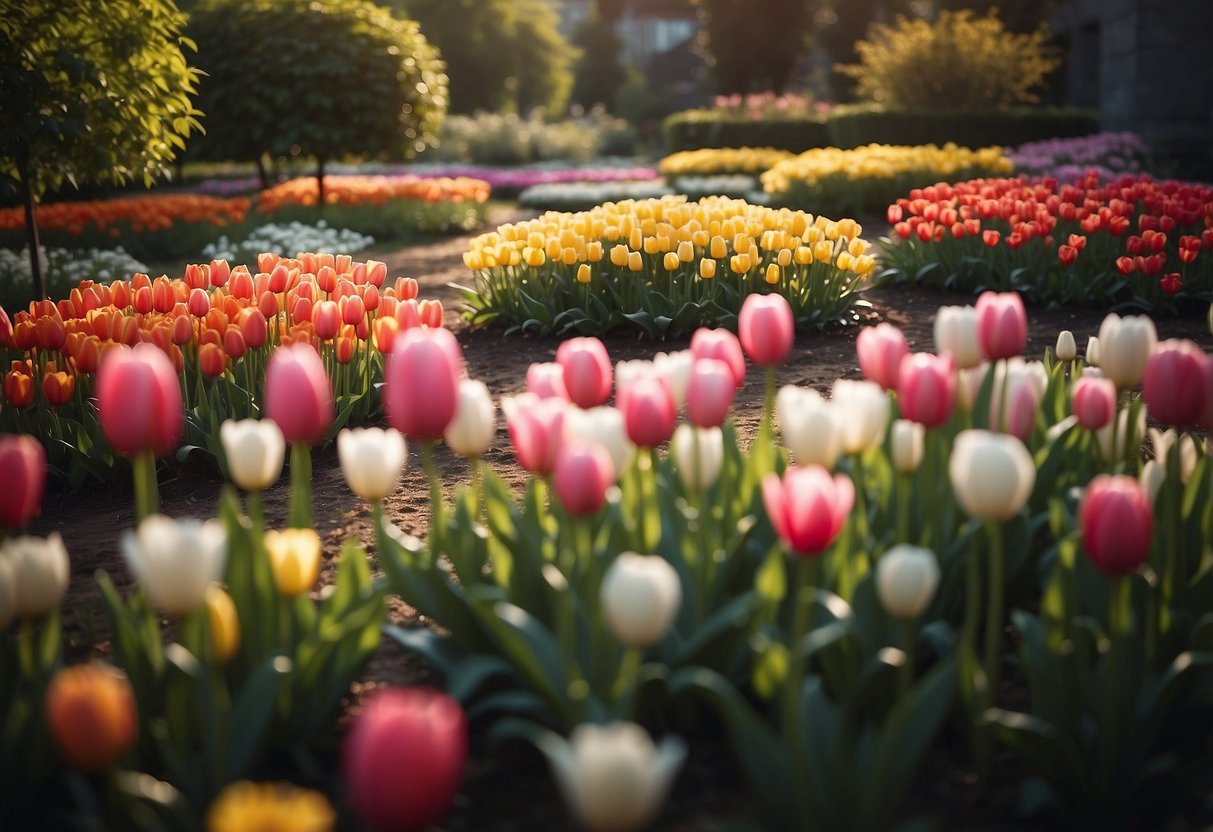
Create a vibrant Tulip Whirl by planting tulips in a circular pattern. Use a mix of colors like reds, yellows, and pinks for a stunning display.
Make sure to plant the tulip bulbs about 4 to 6 inches deep and 4 to 5 inches apart for the best growth.
Pair tulips with other spring bulbs to add variety and contrast. This can make your garden burst with color when spring arrives.
8) Marigold Mandala
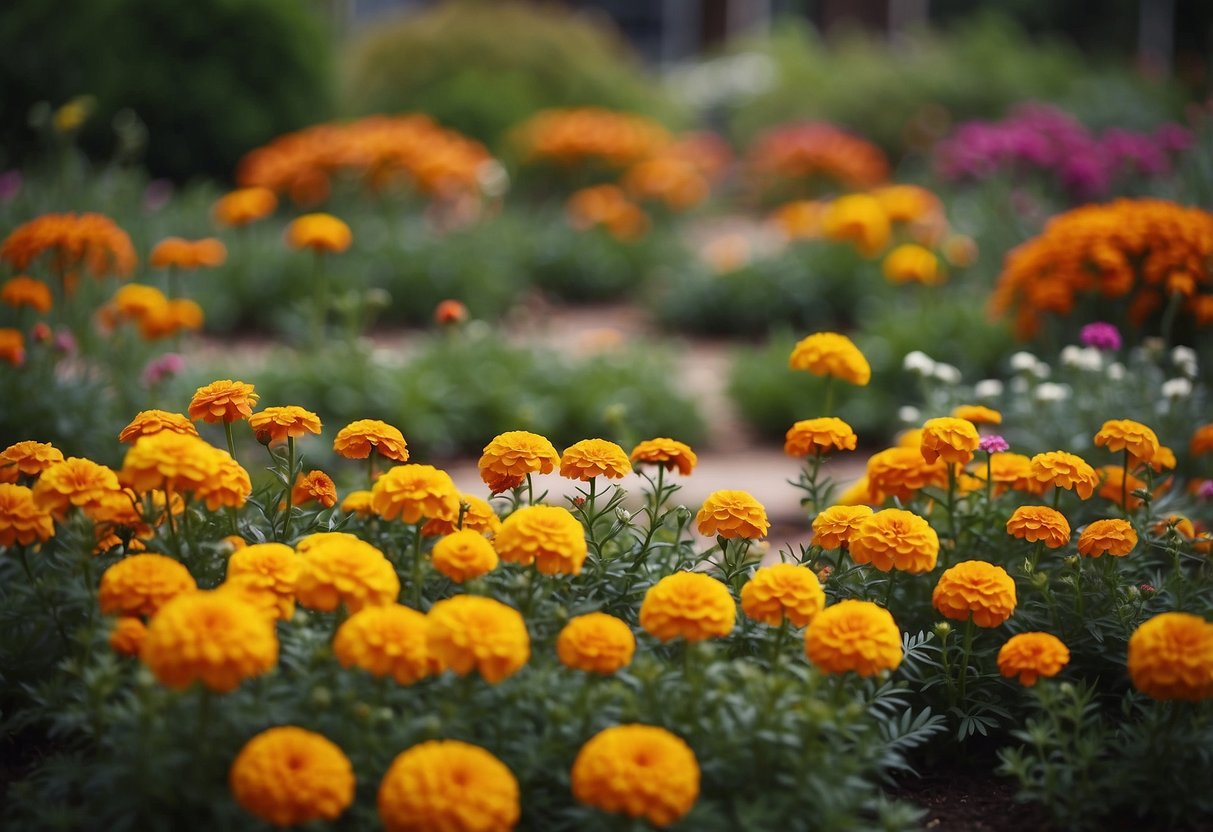
You can create a stunning marigold mandala garden in your backyard. This circular design uses marigolds to form concentric patterns or spirals.
Marigolds come in bright colors like yellow, orange, and red, making your garden pop. Their cheerful hues can be arranged in patterns that are both visually appealing and inviting to pollinators.
Mandala designs aren’t just beautiful; they also maximize space and help with water retention. You can easily design one by plotting out circles on paper first, then transferring the design to your garden.
9) Herb Spiral

An herb spiral is a great way to grow a variety of herbs in a small space. It looks beautiful and adds visual interest to your garden.
Use large stones to create the spiral’s base. Then, fill the gaps with gravel or rubble to stabilize it.
Plant sun-loving herbs like rosemary and thyme at the top. Moisture-loving herbs such as parsley and cilantro go at the bottom. This smart arrangement helps each plant get the right amount of sunlight and water. Learn more about setting up an herb spiral for your garden.
10) Peony Circle
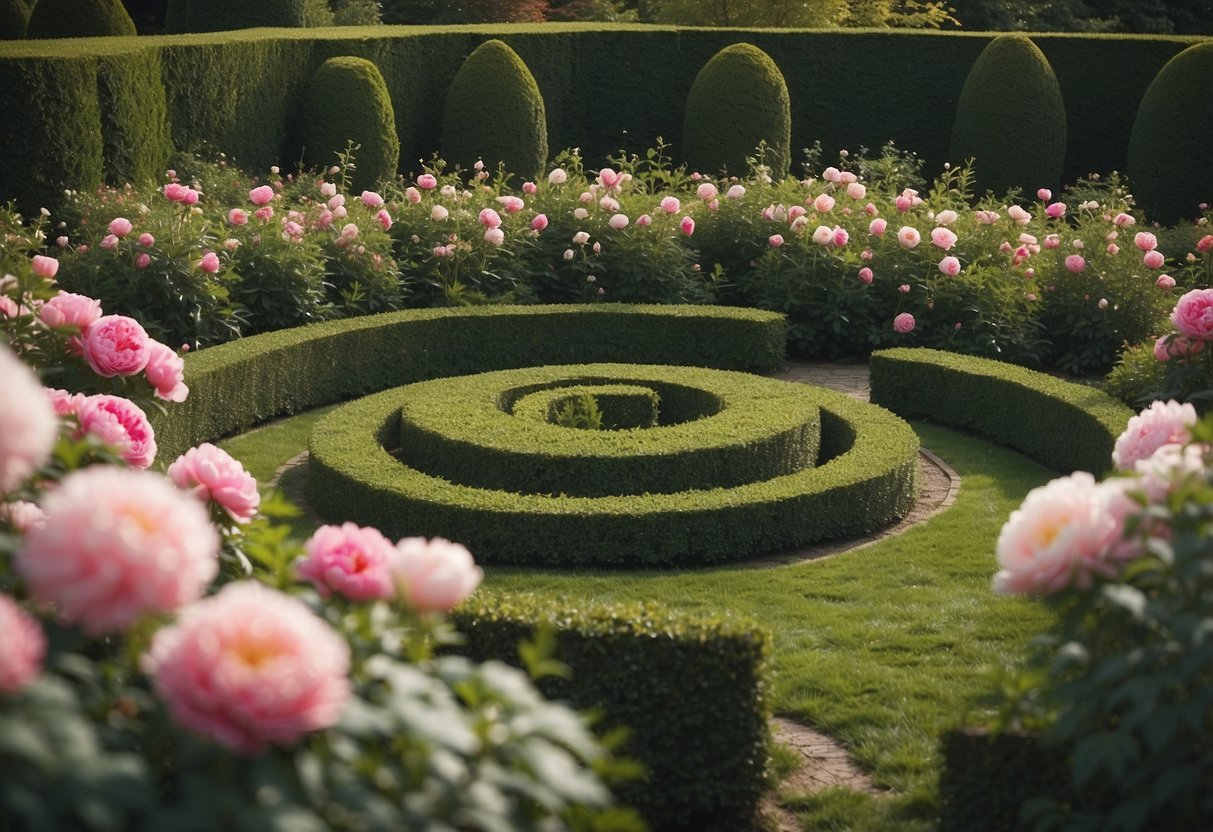
A peony circle can transform your garden into a beautiful retreat. Arrange your peonies in a circular pattern. Choose varieties with different colors, like pink, red, yellow, and white.
A central feature, like a bird bath, adds charm and attracts wildlife to your garden.
Peonies need well-drained soil and sunlight. Water them regularly, especially during dry spells.
Select hybrids that bloom at different times to enjoy flowers all season long. Your garden will look stunning and be the envy of your neighbors. The diverse colors and scents will make your peony circle truly special.
For more inspiration, visit this Peony Garden.
Design Principles
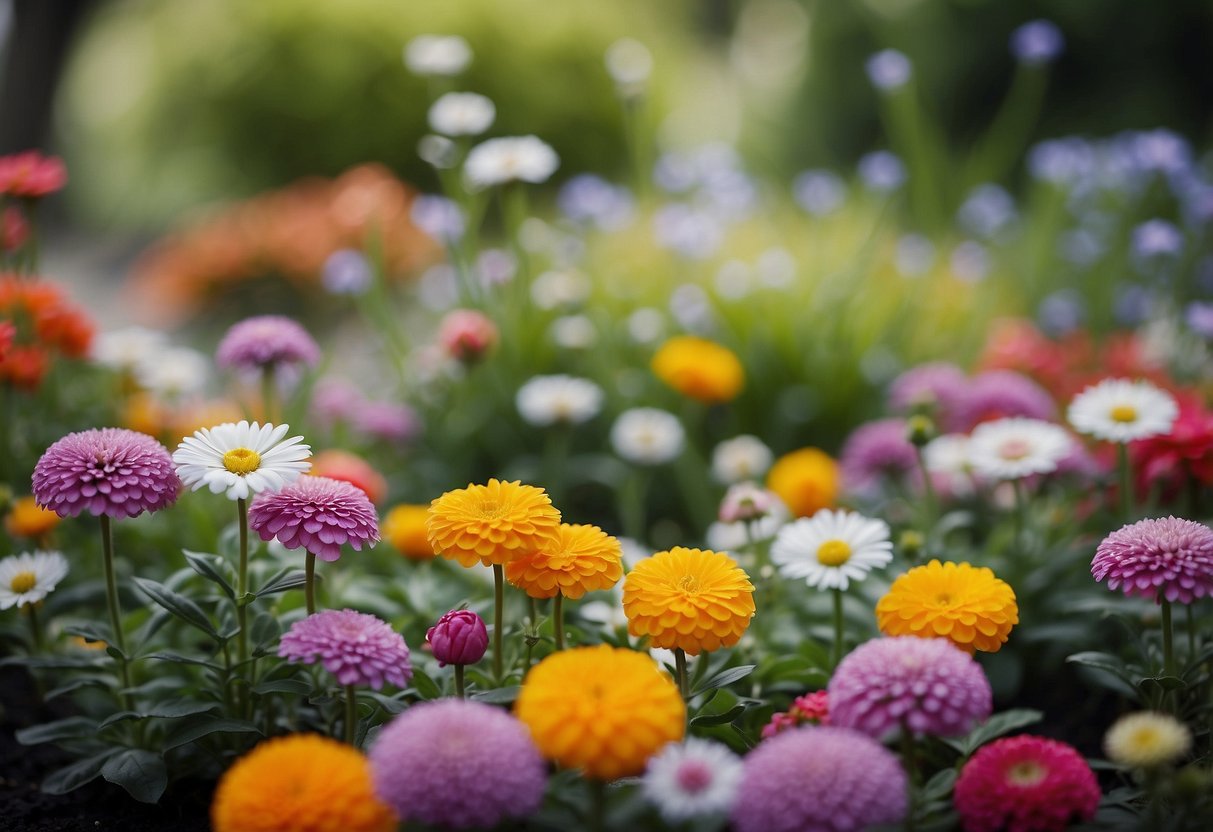
When designing a small circle flower garden, it is essential to focus on selecting the right flowers, establishing a captivating focal point, and coordinating colors harmoniously. This ensures your garden is visually appealing and brings joy to anyone who sees it.
Choosing the Right Flowers
Selecting the right flowers is crucial for a small circle garden. Choose flowers that thrive in your climate and soil. Perennials like daylilies, coneflowers, and hostas are excellent choices as they come back year after year. Annuals like marigolds and petunias offer vibrant colors and fill gaps between perennials.
Consider the flower’s height and spread. Taller plants like sunflowers can go in the center, while shorter plants like pansies should be around the edges. This layered approach creates depth and dimension.
Mix different flowering times to ensure there are blooms throughout the growing season. For example, plant daffodils for early spring and asters for late summer. This continuous bloom cycle keeps your garden lively and attractive.
Creating a Focal Point
A focal point is the centerpiece of your garden, drawing attention and providing structure. This could be a statue, birdbath, or a unique plant.
If you choose a plant, consider something like a dwarf tree or a large, flowering shrub. Place the focal point in the center of the circle, making it the star of the garden. Surround it with complementary plants to enhance its beauty.
Garden features like a small fountain or a decorative rock can also serve as a focal point. These elements add interest and can attract birds and butterflies, making your garden a lively and enchanting space.
Color Coordination
Color coordination brings harmony to your garden. Start by choosing a color scheme—complementary colors like purple and yellow or analogous colors like red, orange, and yellow work well.
Experiment with shades and tones. Mix light and dark variations of your chosen colors to add depth and contrast. For example, pair pale pink roses with deep red tulips.
Consider the color of your garden accessories too. Pots, pathways, and borders should match or complement the flowers to create a cohesive look. Using a limited color palette ensures that your garden looks neat and well-planned.
By following these design principles, your small circle flower garden will be a delightful and harmonious space.
Planting Techniques

When you’re starting a small circular flower garden, two main things to focus on are preparing the soil and arranging the plants correctly. These steps ensure that your garden will be healthy and visually appealing.
Soil Preparation
First, test your soil to determine its pH level and nutrient content. You can use a home testing kit for this. Most flowers thrive in soil with a pH between 6.0 and 7.0. If your pH is off, you can amend it with lime to raise the pH or sulfur to lower it.
Next, clear the area of any weeds, rocks, or debris. Till the soil to a depth of about 6-8 inches to ensure it’s loose and well-draining. Add organic matter like compost or manure to boost the soil’s fertility. Mix these amendments thoroughly into the soil.
Tip: Use a garden fork or a tiller to break up the soil more efficiently.
Spacing and Arrangement
Decide on a focal point for your circular flower bed. This could be a taller plant, a sculpture, or a small tree. This centerpiece will act as the anchor for your design. Arrange your plants around this point, placing taller plants in the middle or at the back and shorter ones towards the edges.
Make sure to follow the spacing guidelines on your plant tags. Crowding plants can lead to poor air circulation and increased disease risk. For a more organized look, plant flowers in small groups based on their color and height. This will create a balanced and cohesive appearance.
Tip: Use a measuring tape or a piece of string to ensure even spacing between plants.
By focusing on these planting techniques, you can create a beautiful and healthy small circular flower garden.
Maintenance Tips
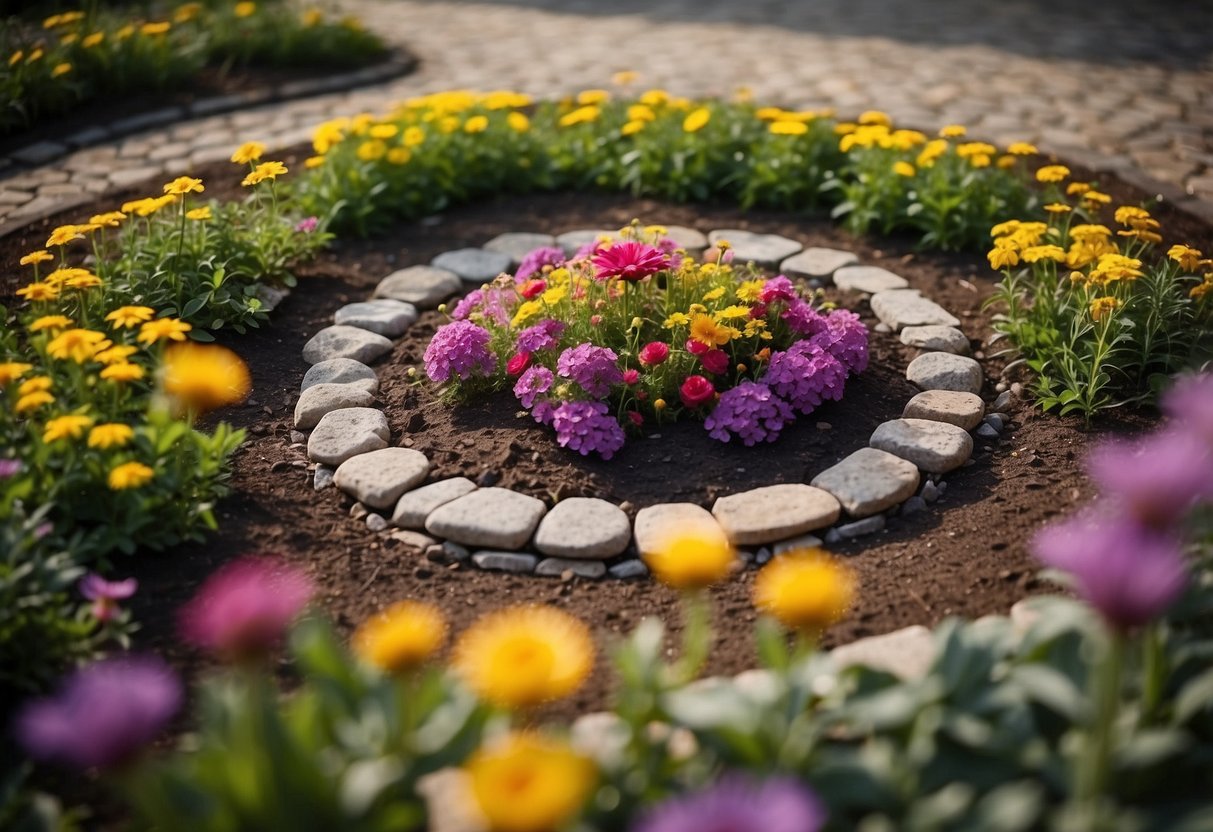
Taking care of a small circle flower garden involves regular watering, proper fertilization, and keeping pests and weeds in check. By following these easy steps, you can maintain a beautiful and healthy garden.
Watering Guidelines
Watering is crucial for your garden. Water your flowers early in the morning to minimize evaporation. Try using a soaker hose to provide a slow, steady supply of water directly to the roots.
This helps prevent fungal diseases.
Most flowers need about 1-2 inches of water per week. To check if they need water, stick your finger an inch into the soil. If it’s dry, it’s time to water. Grouping plants with similar water needs together simplifies this process.
Fertilization Best Practices
Use a balanced, slow-release fertilizer for your flowers. Applying it in early spring helps encourage strong growth and blooms. Follow the package instructions for the correct amount since over-fertilizing can harm your plants.
Add compost to enrich the soil. Compost not only provides nutrients but also improves soil structure. Consider using organic fertilizers like fish emulsion or liquid seaweed for added nutrients.
Avoid fertilizing your flowers during their dormant period to prevent nutrient burn.
Pest and Weed Control
Keep weeds out by applying a 2-3 inch layer of mulch. Mulch blocks sunlight, preventing weed seeds from germinating. Hand-pull any weeds that do appear to prevent them from spreading.
For pests, regularly inspect your plants for signs of trouble such as holes in leaves or stunted growth. Use insecticidal soap or neem oil to treat common garden pests like aphids or spider mites.
Encourage beneficial insects such as ladybugs, which eat harmful pests. Planting flowers like marigolds that repel pests can also help maintain a healthy garden.
By following these guidelines, your small circle flower garden will thrive and look beautiful all season long.







